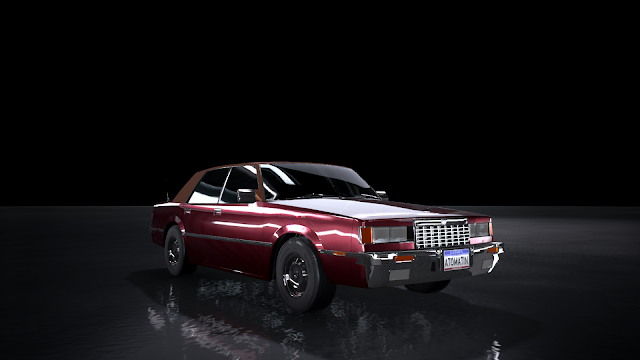Confessions of an Automationeer, Part 152: God's Own Chariot
In my spare time, I decided to revisit the idea of a hand-built flagship luxury car with an immensely powerful engine, but this time with a greater focus on performance. The result was the 1992 WM Deus 720R - an ultra-high-performance version of the standard Deus, which debuted in 1990. This full-size four-door luxury sedan was blessed with a 525-horsepower 7.2-liter V12 engine driving the rear wheels via a 6-speed manual or 5-speed automatic gearbox - with the latter, the Deus 720R could reach 207 mph and blast to 60 mph from a standstill in just 4.5 seconds.
The WM Deus 720R - a monstrous four-door luxury sedan with the heart of a supercar.
Thanks to specially tuned fully independent active suspension, large ABS-assisted vented disc brakes, and 18-inch forged magnesium alloy wheels wrapped in wide low-profile high-performance tires, the Deus 720R had the handling and braking to challenge even the best supercars of its day.
This is the view most people would see of the Deus 720R on the road.
The Deus' highly refined feel was enhanced by a bespoke hand-built interior crafted using only the finest materials; a top-shelf audio system that included a CD player was standard.
The interior of the WM Deus 720R - surely the fastest ground-bound mobile office in the world of its time?
Even crazier still was the Deus 720X, whose uprated engine (boasting tubular headers and individual throttle bodies) developed a staggering 575 horsepower. The only transmission for this trim was a 6-speed manual gearbox - the result was a mind-boggling top speed of 217 mph and a 0-60 mph time of exactly 4 seconds.
The Deus 720X is a leaner, meaner version of the already formidable 720R.
Visually, the only differences between the 720X and its lesser sibling are smoked headlight and taillight lenses, larger dual exhaust pipes in place of the standard smaller quad units, and bigger front and rear spoilers.
Nothing on four wheels with four (or more) doors and four (or more) seats can match the menacing air of the Deus 720X.
To harness its extra power, the 720X has a retuned suspension with a lower ride height, providing an even more responsive feel than before.
A third pedal and a stick shift come as standard in the 720X.
In short, this is the craziest four-door car I have ever made in Automation - and in fact, I would have entered it in QFC23 had I not submitted a heavily revised version of the slower, but more luxurious, Ventnor V12 in its place.













